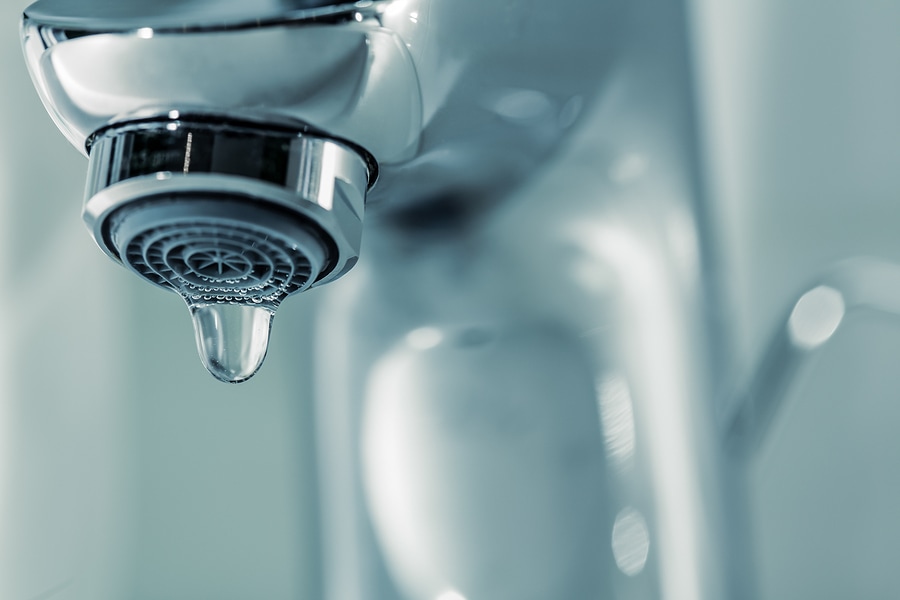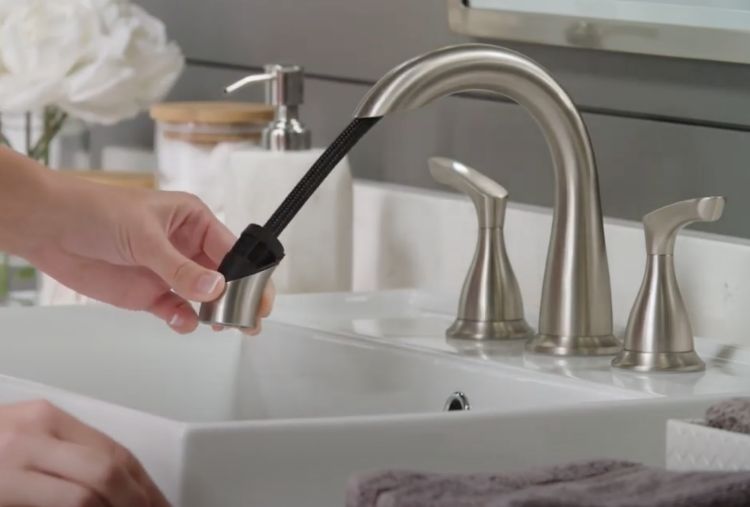When It's Required to Correct a Leaking Faucet
When It's Required to Correct a Leaking Faucet
Blog Article
They are making a few great observations regarding Water Dripping from Faucet: Why and How to Fix overall in this post in the next paragraphs.

Dripping taps could seem like a minor inconvenience, yet their influence surpasses simply the inconvenience of the sound. From drainage to incurring unneeded economic expenses and health and wellness risks, overlooking a leaking faucet can lead to various consequences. In this article, we'll delve into why it's critical to resolve this usual home problem quickly and effectively.
Waste of Water
Environmental Effect
Dripping faucets contribute considerably to water wastefulness. According to the Environmental Protection Agency (EPA), a solitary tap dripping at one drip per second can throw away greater than 3,000 gallons of water each year. This not only stress water sources but also affects ecosystems and wildlife based on them.
Financial Prices
Increased Water Expenses
Past the ecological influence, leaking faucets can pump up water bills considerably. The gathered wastefulness with time equates right into greater energy expenses, which can have been avoided with prompt repairs.
Potential Residential Or Commercial Property Damages
In addition, prolonged leaking can bring about harm to components and surface areas bordering the faucet. Water buildup can cause discoloration, deterioration, and also structural problems if left neglected, leading to additional fixing expenses.
Health Problems
Mold and Mildew Development
The constant presence of moisture from a trickling faucet creates an excellent setting for mold and mildew and mold development. These fungis not just endanger interior air quality but additionally pose health and wellness dangers, specifically for people with breathing conditions or allergies.
Waterborne Illness
Stagnant water in leaking faucets can become a breeding place for microorganisms and various other pathogens, raising the risk of waterborne illness. Impurities such as Legionella bacteria flourish in stationary water, possibly causing severe ailments when consumed or inhaled.
DIY vs. Specialist Fixing
Pros and Cons of DIY Repair Work
While some may attempt to take care of a leaking tap themselves, DIY repairs come with their very own set of obstacles. Without proper knowledge and tools, do it yourself efforts can intensify the issue or result in incomplete repair work, prolonging the trouble.
Benefits of Working With an Expert Plumber
Employing an expert plumber ensures that the underlying root cause of the dripping tap is dealt with properly. Plumbing technicians possess the experience and tools to detect and fix tap issues effectively, conserving time and reducing the threat of additional damages.
Step-by-Step Overview to Repairing a Dripping Tap
Tools Required
Before attempting to fix a leaking tap, gather the necessary devices, consisting of an adjustable wrench, screwdrivers, substitute parts (such as washers or cartridges), and plumber's tape.
Common Tap Issues and Their Solutions
Determine the sort of faucet and the certain concern triggering the drip. Common problems include worn-out washing machines, corroded shutoff seats, or defective O-rings. Describe supplier guidelines or on the internet tutorials for detailed support on repair services.
Safety nets
Routine Maintenance Tips
To prevent leaking taps, do regular maintenance such as cleansing aerators, evaluating for leaks, and changing worn-out components immediately. Furthermore, think about installing water-saving tools or updating to more reliable components.
Significance of Prompt Services
Resolving trickling taps as quickly as they're observed avoids additional water wastage and prospective damages, ultimately saving both water and cash in the future.
Influence On Building Value
Understanding of Well-Maintained Building
Preserving a residential property in good condition, consisting of dealing with upkeep problems like dripping taps, enhances its viewed worth and desirability among possible customers or tenants.
Impact on Resale Value
Qualities with well-maintained plumbing components, consisting of faucets, command higher resale values in the real estate market. Resolving leaking faucets can add to a positive impression throughout building evaluations and negotiations.
Environmental Obligation
Individual Contribution to Preservation
Taking duty for taking care of dripping faucets straightens with broader efforts towards water conservation and ecological sustainability. Every person's activities collectively make a substantial effect on protecting priceless resources.
Sustainable Living Practices
By prioritizing punctual fixings and taking on water-saving behaviors, individuals add to sustainable living practices that profit both existing and future generations.
Verdict
Addressing a trickling faucet surpasses mere comfort; it's an essential step towards preserving water, reducing monetary expenses, and securing wellness and residential or commercial property. Whether via do it yourself repairs or specialist aid, doing something about it to take care of trickling taps is a tiny yet impactful means to promote liable stewardship of resources and contribute to a healthier, more sustainable future.
How to Fix a Dripping or Leaky Faucet
A leaking faucet is one of the most common problems that homeowners encounter, but it being commonplace doesn’t make it any less annoying. The constant drip drip drip of a leaking bathtub faucet, showerhead, or sink tap can disturb your home’s serenity. Left neglected, a dripping faucet can also result in higher water bills and discoloration or mold growth in your sink or plumbing fixtures.
Fortunately, you don’t have to be a trained plumber to know how to stop a dripping faucet. With some basic tools, replacement parts, and a little patience, leaky faucet repair is a breeze. In this article, we’ll explain what causes dripping faucets and how you can fix them.
What Causes a Leaking Faucet?
Kitchen and bathroom faucets come in all manner of designs, but most involve some combination of valves, O-rings, seals, and washers. The O-ring is usually the weakest link, but any one of these pieces can wear down over time. Heat, moisture, temperature fluctuations, minerals, mold, and movement can contribute to warping and corrosion, breaking the watertight seal. This just comes with the territory of being a homeowner. Everything is always subject to wear and tear, and some component parts of your appliances and fixtures need to be replaced on occasion. At least replacement O-rings are cheap!
More rarely, dripping faucets can be a symptom of excessively high water pressure. Were this the case in your home, you would probably notice that the leak is not isolated to one faucet. Water pressure issues are harder to resolve on your own. We recommend contacting a professional plumber if you suspect your water pressure is too high.
How to Fix a Dripping Faucet
Pipe wrench or monkey wrench Allen wrench set Screwdrivers Old towel or rag Shut off the water.
Before you do anything, you need to turn off the water to keep from drenching your kitchen or bathroom. You should find a valve under the sink and against the wall. Once you’ve turned this valve, try turning the faucet on to confirm that the water source has been cut off.
If you can’t locate your local valve for the faucet you’re working on, you can always shut off the water to the house at the main valve. Of course, this will prohibit anyone from using the sinks, showers, or toilets while you’re working on the faucet that’s giving you trouble.
Plug or block the drain.
You’ll be disassembling the faucet and removing some small bits of hardware. Plug the drain with a stopper or rag to avoid the possibility of a small screw falling into your P-trap.
Take apart the faucet assembly.
There are several varieties of kitchen and bathroom faucets, each with its own manner of assembly. For detailed instructions on how to disassemble your faucet, you can refer to the fixture’s manual or contact the manufacturer. If you know whether you have a ball, disc, cartridge, or compression faucet, you can find detailed schematics online.
In general, you need to begin by removing the faucet handles. You might notice a small screw that you’ll need to remove with a screwdriver or Allen wrench. If you don’t see any visible securing hardware, it’s likely hidden under a decorative cap that can be unscrewed or popped off with flathead screwdriver.
Remove each piece methodically, consulting a schematic when necessary. Take notes or arrange the pieces in such a way to make it easier to correctly reassemble the faucet later.
Remove the cartridge.
Once you’ve removed the handles and securing hardware, you should be able to remove the valve cartridge or stem. Some cartridges will slide right out. Other faucet models will require you to loosen a nut with a pipe wrench before you can remove the valve stem.
Examine the exposed hardware.
With the cartridge or stem removed, inspect the component parts. Check the rubber O-rings for wear and tear. Also examine the seat washer for corrosion or other damage. These pieces are usually the responsible parties for a dripping faucet, but it’s worth inspecting the other component parts while you have the faucet disassembled.
Find replacement parts.
Once you’ve identified which faucet component has failed, find an identical replacement. Your local hardware store should have O-rings, seat washers, and other standard components in stock. If you have a luxury or uncommon faucet, you may have to contact the manufacturer for a replacement part.
It’s a good idea to take your old parts with you to the hardware store so you can compare them with the store’s inventory and be sure you’re purchasing the correct replacement.
Reassemble the faucet.
With your new parts in hand, reconstruct the faucet and handles. Don’t be tempted to overtighten screws or nuts. You might think this could create a better seal, but it can instead damage or bend a delicate part of the assembly and create a new problem for you.
Turn on the water and test the faucet.
The only thing left to do is test your work. Unplug the sink, turn the water back on, and try the faucet. Congratulate yourself on a job well done!
https://www.libertyhomeguard.com/how-to-fix-a-dripping-or-leaky-faucet/

I came across that review on Should I Repair or Replace a Leaky Faucet? while doing a lookup on the search engines. Are you aware of someone else who is serious about the subject? Take a moment to share it. Thank you for taking the time to read it.
Report this page